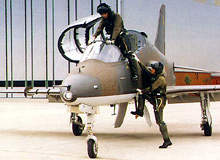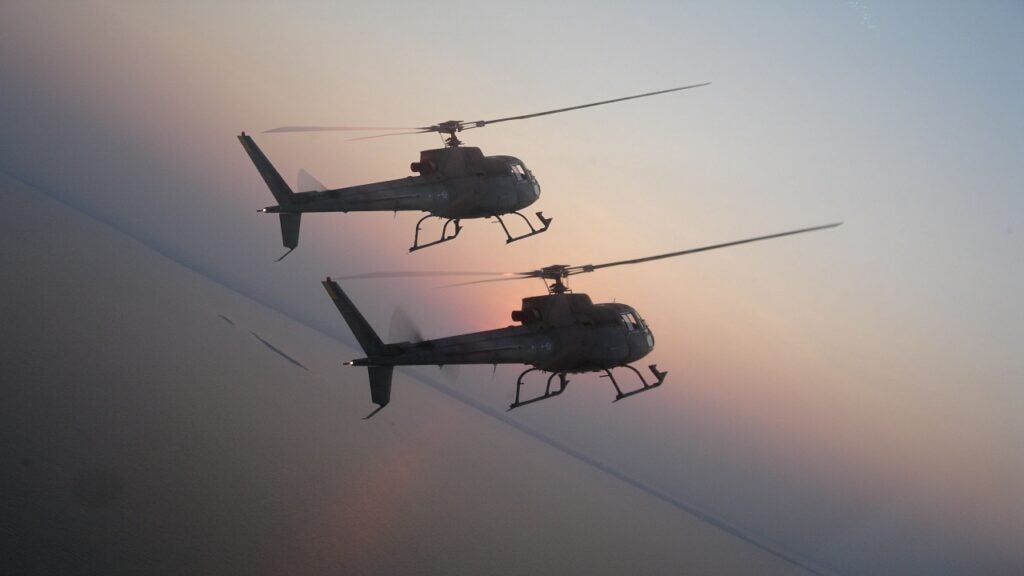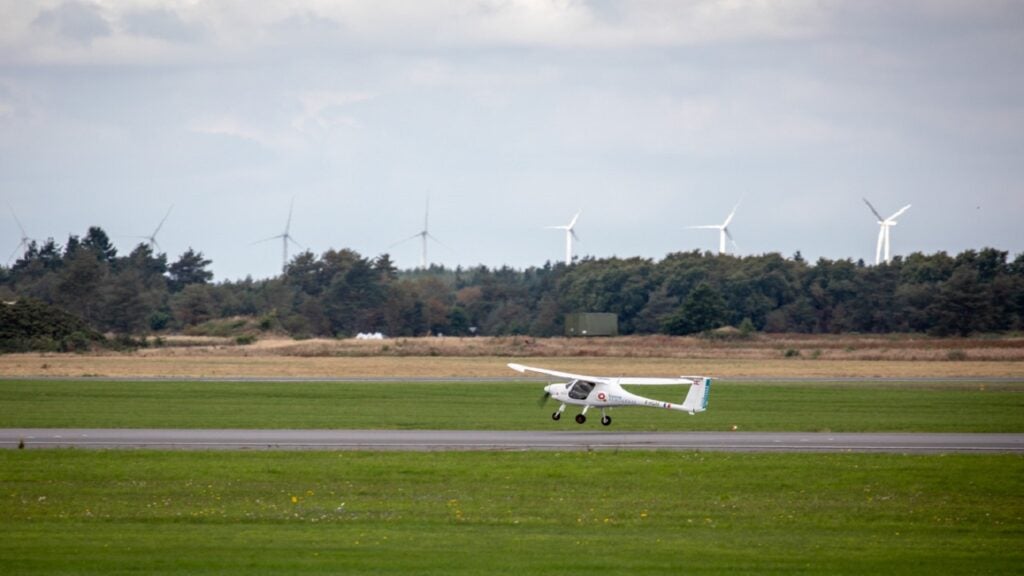
The Hawk family of aircraft, manufactured by BAE Systems, has been made famous by the Red Arrows Royal Air Force Aerobatic Team. Since entering service with the Royal Air Force in 1976, over 800 Hawk aircraft have been delivered and it has been exported to Abu Dhabi, Dubai, Finland, Indonesia, Kenya, Malaysia, Oman, Saudi Arabia, South Korea, Switzerland, USA and Zimbabwe.
The Hawk has been developed in four configurations: the Hawk 50 series including the Goshawk T-45 for the US Navy; Hawk 60 series current production trainer aircraft; Hawk 100 advanced two-seat weapon systems trainer with ground attack capability; and Hawk 200 single-seat, multi-role combat aircraft
Hawk training aircraft variants and orders
A derivative of the Hawk 100, the mk 127/128 LIFT lead-in fighter is in service with the Royal Australian Air Force and the Canadian Air Force and has been ordered by South Africa, Bahrain and the UK. 18 Hawk 115 aircraft were delivered to the Nato flying training in Canada (NFTC) between July 2000 and 2001.
In March 2004, the Indian Air Force signed a contract for the purchase of 66 Hawk 132 (a variant of the Hawk 115) aircraft. The first 24 are being built by BAE in the UK. The remaining 42 are being built under license by Hindustan Aeronautics Ltd (HAL) in India. The first aircraft made its maiden flight in December 2006 and was delivered in November 2007.
The aircraft entered service with the Indian Air Force in February 2008. By August 2008, 14 Hawks had been delivered by BAE Systems, the rest are scheduled for delivery by December 2009. HAL delivered the first license-built Hawk in August 2008.
In June 2007, Finland announced the acquisition of 18 Hawk 66 jets from the Swiss Air Force, to add to the Finnish Air Force fleet of 49 Hawk 51 trainers.
Hawk 60 series
The Hawk 60, powered by an Adour mk861 turbofan engine, provides air combat manoeuvring and weapon conversion training. It is highly spin resistant, requiring full rudder to initiate and maintain a spin and recovering in one turn after centralising the flying controls. Stall characteristics are predictable and progressive.
Low-speed handling provides the student pilot with minimal trim changes when the flaps and gear are retracted or extended. Crosswinds of up to 30kt can be accommodated on aircraft take-off or landing with or without stores. The aircraft maintains positive control in all flight manoeuvres up to Mach 1.2.
Hawk 100 two-seat trainer aircraft
Hawk 100 is an advanced two-seat weapons systems trainer with enhanced ground attack capability. The aircraft provides fighter lead-in training and navigator and weapons systems operator training.
The nose of the Hawk 100 is re-profiled to accommodate additional sensors and avionics systems, including a forward-looking infrared (FLIR). The aircraft has seven hardpoints on the wings for weapon payloads. Short-range air-to-air missiles can be mounted on the wingtip missile launchers.
Hawk 200 single-seat multi-role combat aircraft
The Hawk 200 is a single-seat, lightweight multi-role combat aircraft for air defence and ground attack missions. On air defence missions, the Hawk 200 can attain two hours on patrol 100nm from base when fitted with underwing fuel tanks. In a close air support role, the Hawk 200 has a radius of action of over 100nm. For the interdiction role, Hawk 200 can deliver 2,000lb of ordnance at a range of nearly 300nm when fitted with external fuel tanks. The range can be extended by air-to-air refuelling.
Hawk 200 weapons
The Hawk 200 has 11 external store points with four underwing pylons, an under-fuselage pylon, and wingtip air-to-air missile stations. The range of external stores includes air-to-air missiles, a gunpod, rocket launchers, reconnaissance pod, retarded and free-fall bombs up to 1,000lb, runway cratering, anti-personnel and light armour bombs, cluster bombs, practice bomb and rocket carriers and external fuel tanks.
The electronic warfare systems include a radar warning receiver and automatic or manually operated chaff and flare dispensers.
Sensors
The Hawk 200 is equipped with a Northrop Grumman APG-66H multi-mode radar, LINS 300 ring laser gyroscope inertial navigation system, air data sensor, display processor and mission computer. The systems are interconnected by dual redundant digital bus.
The radar has ten air-to-surface and ten air-to-ground modes for navigation fixing and weapon aiming.
Cockpit
The pilot has a hands-on throttle and stick (HOTAS) control system and a wide-field-of-view head-up display (HUD). The pilot can select the weapons and release mode prior to initiating an attack by using the weapon control panel, which controls the stores management system.
The cockpit has a colour display, with a dedicated processor and 15-colour graphics symbology generator. 27 display formats provide flight and aircraft data.
Engine
The Hawk 200 is powered by an Adour 871 twin-spool, low bypass ratio turbofan engine from Rolls-Royce. The flexible fuel tanks are installed in the fuselage and compartmented integral tanks are located in the wings. External tanks can also be carried on the in-board under-wing pylons.




